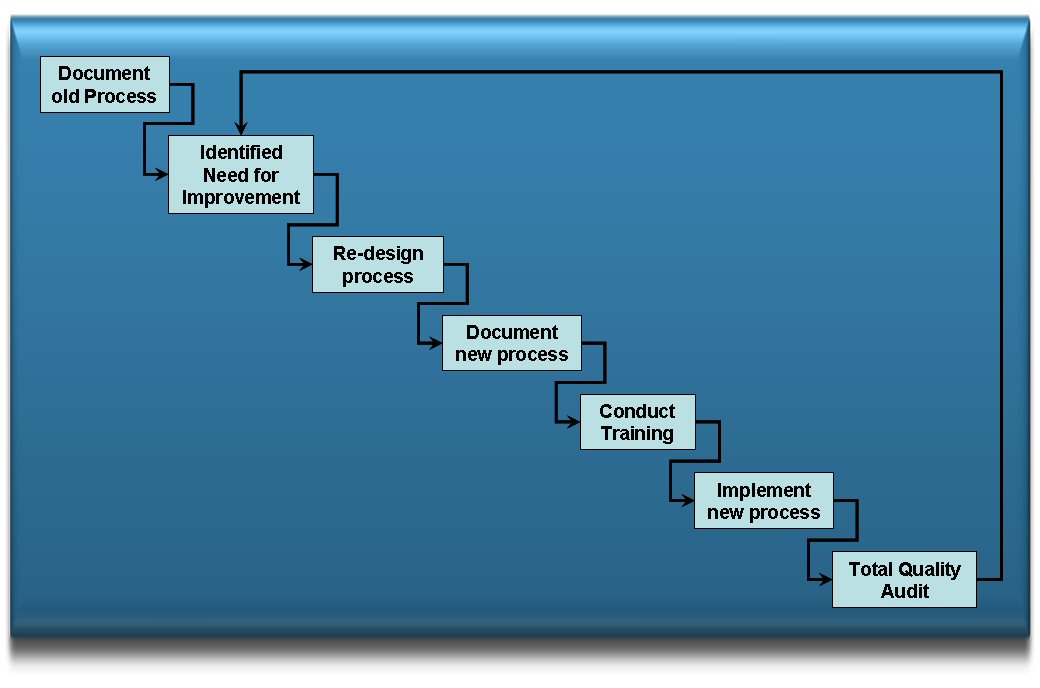4.16 - Total Quality Assurance Function
What are Business Processes?
Business processes are simply the way we go about things in a business environment. For example:-
- The way we collate our sales information and produce invoices - the invoicing process.
- The way we put together and file information on our products
- The way we control the whole process of materials flow in a factory.
Total Quality
The need for all processes to be clearly understood and well documented is recognised. In a Total Quality environment every activity belongs to a set of business processes adding to the quality of the business. Staff personnel need to be trained in the processes in which they participate as suppliers, customers or operators.
Total Quality Assurance
All businesses consist of a set of interacting flow processes. They may be fragmented, poorly designed, not documented and the workforce may be untrained, but they exist. A business that has no process for collecting money from its customers does not survive.
The role of the Total Quality Assurance is to ensure that weaknesses in processes are identified and the process continuously improved to meet the needs of customers, both internal and external to the business.
Process Redesign and Improvement

Process re-design is a team activity. It needs:-
- A clear view of the process and its inputs and outputs
- Input from those who participate in the process to ensure that supplier and customer needs are met.
- System engineering input to ensure sound design using Quality Assurance principles
- Good project management.
Documentation
An undocumented process soon deteriorates as it is passed around the workplace verbally. Good documentation is the basis of communication and training. However, documentation can be kept simple using:-
- Pictorial flow charts showing the overall process. It is easier to understand and audit than pages of text.
- The minimum of written explanation when necessary
The documentation should show:-
- What has to be done
- When it has to be done
- Who does it
- How the performance of the process will be measured
- It should be posted where the process operators can see it (see guide 5.20)
Training
This is a common area of weakness. Poor staff training soon gives a good process a bad name. Thorough training before implementation is essential.
Implementation
All that is needed next is to ensure that everyone knows what the new / re-designed process looks like and what going to happen and when. A good project plan will needed.
Total Quality Assurance Audit
The audit function:-
- Periodically checks performance at key points in the process
- Monitors the process through measures of performance
- Examines outputs from processes in search of process failures
- Identifies non-conformance
Identifying the need for Improvement
The volume of noise coming from customers of the process may tell that re-design is needed. Approaches that are more proactive are:-
- Customer Satisfaction Audit by an independent QA function
- Process Quality Management
The second, more rigorous approach, develops priorities for improvement by relating the Critical Success Factors for the business to the importance and perceived quality of its processes and Measures of Performance (MOPS) used to monitor them.
Note: the Quality Assurance Manager does not just concern himself with product quality. He independently audits the health of all business processes. If the processes are healthy and capable then a quality end product for the customer is an automatic by-product of the process.